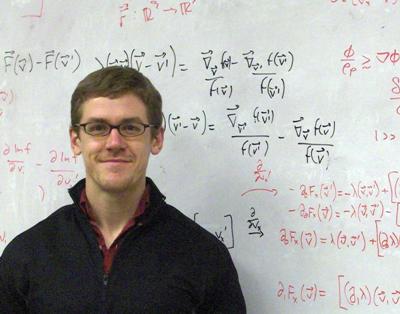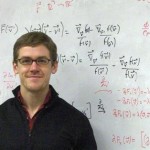An international team of researchers has used the US National Energy Research Scientific Computing Center (NERSC) supercomputers to research the ‘bootstrap’ current, which could lead to more affordable and sustainable magnetic confinement fusion reactors.
In principle, fusion reactors hold the promise of almost limitless and relatively clean energy. However, the critical step is confining the plasma so that fusion can take place. One approach to this process is magnetic confinement, the use of strong magnetic fields to keep the plasma from touching the vessel walls.
However, the plasma’s central temperature and density are constantly fluctuating, and it can be completely disrupted by plasma instabilities. However, if the pressure of the plasma varies across the radius of the vessel, a self-generated current will spontaneously arise within the plasma—a phenomenon known as the bootstrap current, which can help with confinement.
The researchers have modeled the bootstrap current, with the aim of reducing or eliminating the need for an external current driver and thus paving the way to a more cost-effective fusion reactor.
Matt Landreman, research associate at the University of Maryland’s Institute for Research in Electronics and Applied Physics, collaborated with two research groups to develop and run new codes at NERSC that more accurately calculate this self-generated current. They published their findings for tokamak designs in Plasma Physics and Controlled Fusion and a separate set of analyses for stellarators in Physics of Plasmas.
The Plasma Physics and Controlled Fusion paper focuses on plasma behavior in tokamak reactors using PERFECT (Pedestal and Edge Radially-global Fokker-Planck Evaluation of Collisional Transport), a code Landreman wrote. Details on the code can be found in a paper entitled ‘Radially global δf computation of neoclassical phenomena in a tokamak pedestal.’
PERFECT was designed to examine the plasma edge, a region of the tokamak where the current’s behavior is less well understood. Before PERFECT, other codes were used to predict the flows and bootstrap current in the central plasma by solving equations on the assumption that the gradients of density and temperature were gradual.
Landreman said: “The problem with the plasma edge is that the gradients are very strong, so these previous codes are not necessarily valid in the edge, where we must solve a more complicated equation. PERFECT was built to solve such an equation.”
An example of this is can be found when comparing the edge of the plasma current to the inner part of the current. There is a fairly gradual gradient of the density and temperature in the middle, ‘but at the edge there is a fairly big jump in density and temperature—what people call the edge pedestal. What is different about PERFECT is that we are trying to account for some of this very strong radial variation,’ Landreman explained.
Landreman said: “My co-authors had previously done some analytic calculations to predict how the plasma flow and heat flux would change in the pedestal region compared to places where radial gradients aren’t as strong. We used PERFECT to test these calculations with a brute force numerical calculation at NERSC, and found that they agreed really well. The analytic calculations provide insight into how the plasma flow and heat flux will be affected by these strong radial gradients.”
One of the unique things about plasmas is that there is often a complicated interaction between where particles are in space and their velocity,” Landreman added. “To understand some of their interesting and complex behaviors, we have to solve an equation that takes into account both the position and the velocity of the particle,” Landreman said. “That is the core of what these computations are designed to do.”
In the Physics of Plasmas study, the researchers used a second code, SFINCS, to focus on related calculations in a stellarator, where the magnetic configuration differs from that of a tokamak. In a stellarator the magnetic field is not axisymmetric, meaning that it looks different as you circle around the doughnut hole. Landreman commented: ‘A tokamak is to a stellarator as a standard doughnut is to a cruller.’ (Crullers are twisted pastry ‘dunking sticks’.)
Although the stellarator has been less popular that the tokamak since the 1970s, difficulties with the tokamak have meant that the stellarator has regained favour with three more recent projects: the Wendelstein 7-X (W7-X) in Germany; the Helically Symmetric Experiment in the USA; and the Large Helical Device in Japan.
Landreman said: ‘In the W7-X design, the amount of plasma current has a strong effect on where the heat is exhausted to the wall. So at Max Planck they are very concerned about exactly how much self-generated current there will be when they turn on their machine. Based on a prediction for this current, a set of components called the “divertor” was located inside the vacuum vessel to accept the large heat exhaust. But if the plasma makes more current than expected, the heat will come out in a different location, and you don’t want to be surprised.’
The previous code made an approximation that you could basically ignore all the dynamics in one of the dimensions (particle speed), thereby reducing 4D to 3D,” Landreman explained. “Now that computers are faster, we can test how good this approximation was. What we found was that basically the old code was pretty accurate and that the predictions made for this bootstrap current are about right.”
Landreman said: “The codes in these two papers are looking at the average plasma flow and average rate at which particles escape from the confinement, and it turns out that plasma in a curved magnetic field will generate some average electric current on its own. Even if you aren’t trying to drive a current, if you take the hydrogen and heat it up and confine it in a curved magnetic field, it creates this current that turns out to be very important. If we ever want to make a tokamak fusion plant down the road, for economic reasons the plasma will have to supply a lot of its own current.”
The National Energy Research Scientific Computing Center (NERSC) is located at the Oakland Scientific Facility (OSF) of the US National Lawrence Berkeley Laboratory in California. The calculations for both studies were run on Hopper and Edison using some additional NERSC resources, Landreman noted.
Hopper, a Cray XE6 was the NERSC’s first petaflop system and Edison is the NERSC’s latest Cray system, based on a Cray XC30. Hopper has a peak performance of 1.28 Petaflops per second, 153,216 compute cores, 212 Terabytes of memory, and 2 Petabytes of storage. Edison delivers a peak performance of 2.57 petaflops per second, 133,824 compute cores, 357 terabytes of memory, and 7.56 petabytes of storage.
This story appears here as part of a cross-publishing agreement with Scientific Computing World.






